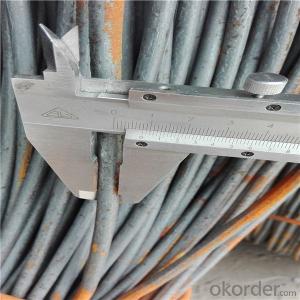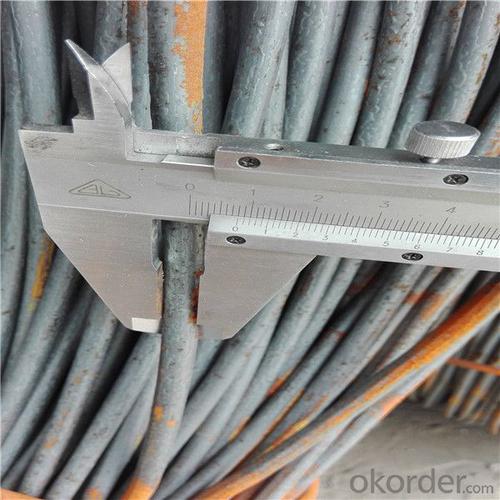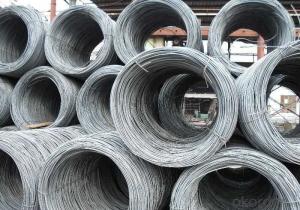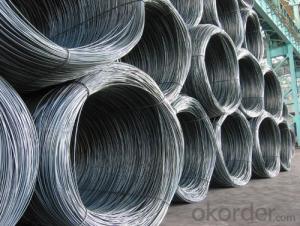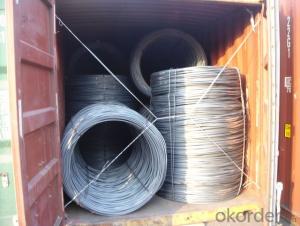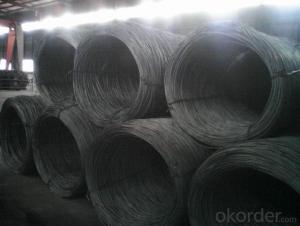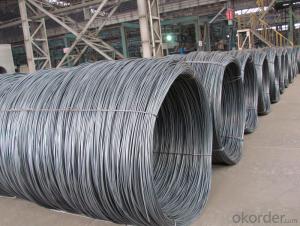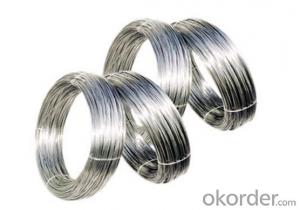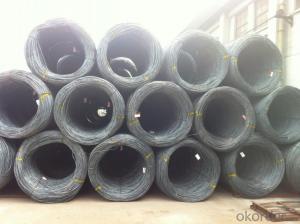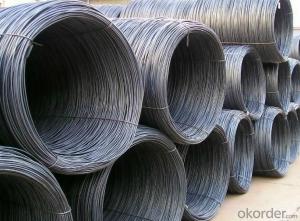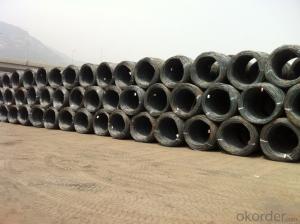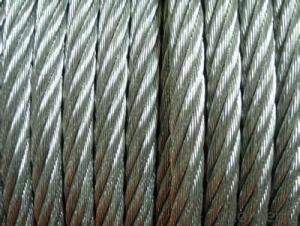Steel wire rod in coils hot rolled Sea 1008
- Loading Port:
- China main port
- Payment Terms:
- TT OR LC
- Min Order Qty:
- 100 m.t.
- Supply Capability:
- 15342 m.t./month
OKorder Service Pledge
OKorder Financial Service
You Might Also Like
Specification
Wire rod is used for many different products. Depending upon how it is cold formed and heat treated,
wire is used, for example, to produce not only wire ropes, barbed wire, wire mesh and nails, but also
springs, welded wire mesh and reinforcement wire.
Mainly used in building and construction as binding wire, tie wire and baling wire; also can be
make for wire mesh
Our service:
(1) We cooperate with famous factories with advanced equipment and well trained workers.
(2) We can provide factory price with trading company service.
(3) We continuously work on the improvement of our processes, guaranteeing
consistently high standards of quality to keep none compensation.
(4) We guarantee 24 hours response and 48 hours solution providing service.
(5) We accept small order quantity before formal cooperation.
(6) We deliver the agreed quality at the agreed time, reacting to changes in
customer wishes in a flexible way.
(7) Due to our volume and selling power, we have excellent freight rates with
shipping lines.
(8) We strive to always be fair and honest in our dealings with customers.
(9) We strive to work together with customers to achieve much more than we can
achieve alone.
(10) Through our passion and commitment we aim to be a market leader in all our
key markets. To maintain our position as market leader we must continue to add
value in all that we do.
Product Description :
Standard | AISI, ASTM, BS, DIN, GB, JIS |
Material/steel grade | Q195-Q235,SAE1006B,SAE1006CR, SAE1008B, SAE1008CR, SAE1010B, SAE1018B, or according to customers requirements |
Wire Gauge | 5.5-12mm |
Coil weight | 1.8-2.1mts |
MOQ | 25MT |
Delivery Time | 15-30 days after receipt of L/C or deposit by T/T |
Packing | In coil and load in container, if large quantity, by bulk vessel; Can be packed as customers' special requirements |
Payment terms | 1).100% irrevocable L/C at sight. 2).30% T/T prepaid and the balance against the copy of B/L. 3).30% T/T prepaid and the balance against L/C |
Application | widely used in machinery parts, manufacturing industry, electronics industry, metal tools and others |
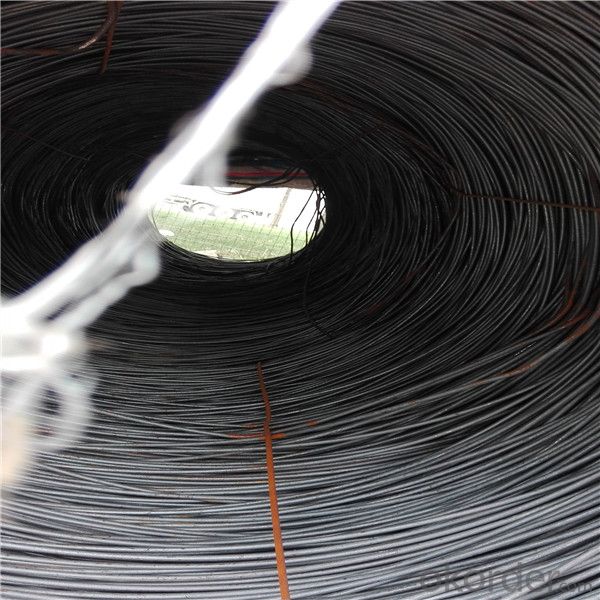
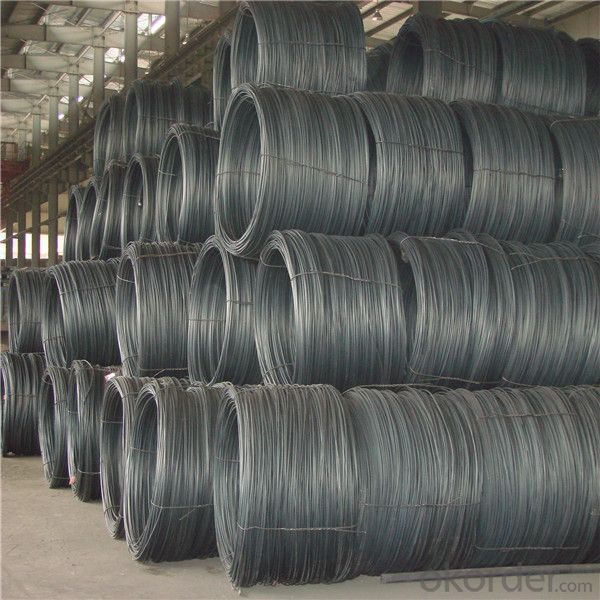
Application :
Mainly used in building and construction as binding wire, tie wire and baling wire; also can be make
for wire mesh.
Packing :
Hot-rolled wire rod is held in a unit with at least four steel straps in the
transverse direction and transported and stored without further packaging.
Before
the steel strapping is applied, the wire rod must be sufficiently compressed.
The strapping is fixed in the transverse direction with a single circumferential
strap so that the strapping does not slip and cause the coil to come apart.
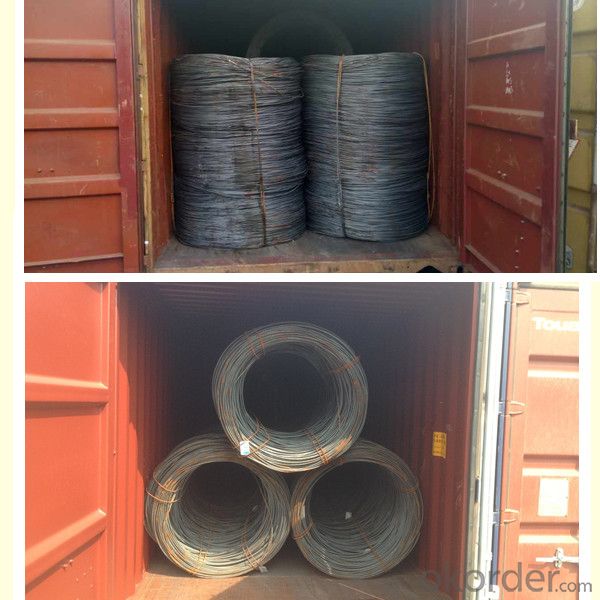
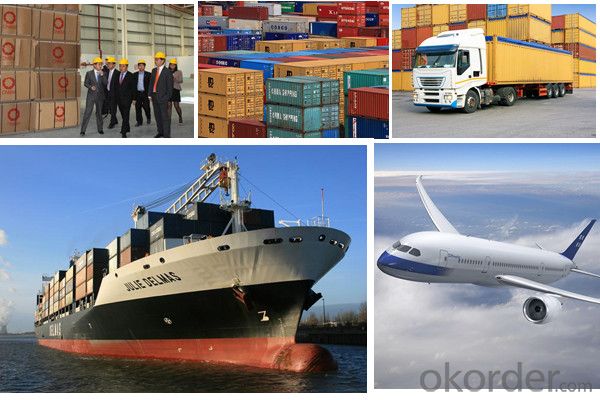
FAQ:
1.Q:Can you accept mixed order?
A: Yes, mixed acceptable .
2. Q: How can I buy CNBM products in my country?
A:Please send us an inquiry or email ,we will reply to you if there is distributor in your country
3. Q: Can we visit your factory?
A: Warmly welcome. Once we have your schedule, we will arrange the
professional sales team to follow up your case.
4. Q: How long does it take to get the product if i place an order?
A:With the process of your requirements,we will pack and deliver in 3
-7 days. If it is by sea shipment,it will take 15-45 days depending on different locations
- Q: What are the major steel wire rod consuming industries?
- The major steel wire rod consuming industries include construction, automotive, machinery, and electrical appliances.
- Q: What are the different tensile testing methods for steel wire rod?
- Some common tensile testing methods for steel wire rod include the straightening and tensile testing method, the axial tensile testing method, and the wire drawing tensile testing method.
- Q: How is the diameter of a steel wire rod determined?
- The determination of the diameter of a steel wire rod is accomplished by means of wire gauge measurement. This procedure entails the utilization of a wire gauge apparatus, comprising a collection of notched plates featuring holes of different sizes. In order to ascertain the diameter of the steel wire rod, it is threaded through the holes of the wire gauge until it fits tightly within the hole, devoid of any voids or extra space. The hole into which the wire fits perfectly indicates its diameter. Wire gauges can be obtained in both standard and metric sizes, facilitating precise measurement of steel wire rods with varying diameters.
- Q: How is steel wire rod used in the production of wire for medical devices?
- Steel wire rod plays a critical role in producing wire for medical devices. It serves as the primary material that undergoes processing and transformation to become the final wire product used in various medical applications. The manufacturing process involves several steps, starting with the careful selection of high-quality steel wire rod. To ensure that the steel wire rod meets the strict requirements for medical devices, it is examined for its chemical composition, mechanical properties, and surface condition. These properties directly affect the wire's performance, strength, and resistance to corrosion and other environmental factors. Once the suitable steel wire rod is chosen, it goes through a series of manufacturing processes to convert it into wire for medical devices. These processes include cleaning, drawing, annealing, and coating. Cleaning removes any impurities or contaminants from the wire rod's surface, ensuring a clean and defect-free wire. Drawing is a crucial process where the steel wire rod is pulled through dies to gradually reduce its diameter, resulting in the desired thickness of the wire. This drawing process also enhances the wire's mechanical properties, such as tensile strength and flexibility, making it suitable for medical applications. After the drawing process, annealing is often performed to relieve any internal stresses accumulated during drawing and improve the wire's ductility. This step involves heating the wire to a specific temperature and then slowly cooling it. Annealing enhances the wire's flexibility and makes it more pliable for further processing. Coating is the final step in wire production for medical devices. Depending on the specific application, the wire may be coated with polymers or metals to provide additional protection against corrosion, improve biocompatibility, or enhance lubricity. The wire produced from steel wire rod is then used in the manufacturing of various medical devices, including catheters, guide wires, sutures, orthopedic implants, and stents. The high-quality steel wire rod ensures that the wire used in these devices meets the necessary standards of strength, flexibility, and durability required for medical use. In conclusion, steel wire rod is a crucial component in the production of wire for medical devices. Its careful selection and subsequent processing through cleaning, drawing, annealing, and coating result in a wire that meets the stringent requirements of medical applications. This wire is then utilized in the manufacturing of various medical devices, contributing to the advancement and improvement of healthcare worldwide.
- Q: What are the common production processes for tungsten-coated steel wire rod?
- The common production processes for tungsten-coated steel wire rod typically include wire drawing, cleaning, coating, and heat treatment. Initially, the steel wire rod is drawn through a series of dies to reduce its diameter and improve its surface finish. After the wire drawing process, the wire rod is cleaned to remove any impurities. Then, a layer of tungsten is applied to the surface of the wire rod through various coating techniques such as electroplating or vapor deposition. Finally, the coated wire rod undergoes a heat treatment process to enhance the adhesion between the tungsten coating and the steel wire, resulting in a durable and high-quality product.
- Q: How is steel wire rod tested for cleanliness?
- Steel wire rod is tested for cleanliness through a series of processes. These typically include visual inspection, ultrasonic testing, magnetic particle inspection, and chemical analysis. Visual inspection ensures that the wire rod is free from any visible contaminants or defects. Ultrasonic testing uses high-frequency sound waves to detect internal flaws or inclusions. Magnetic particle inspection identifies any surface or near-surface defects by applying magnetic fields and observing the response. Lastly, chemical analysis measures the composition of the steel to ensure it meets the required cleanliness standards.
- Q: How is the ductility of steel wire rod measured?
- The ductility of steel wire rod is typically evaluated using a test referred to as the tensile test, or the tension test. This test involves subjecting a sample of the steel wire rod to gradually increasing tensile forces until it breaks. Throughout the test, the elongation or deformation of the sample is measured, providing an indication of its ductility. During the tensile test, the steel wire rod sample is clamped at both ends, and a force is steadily applied to one end. As the force is applied, the sample begins to stretch, and the amount of stretching is recorded. Typically, this elongation is measured as a percentage of the original length of the sample and is known as the percentage elongation. Moreover, the tensile test also determines the ultimate tensile strength of the steel wire rod. This represents the maximum stress that the sample can endure before fracturing. The ultimate tensile strength is a significant factor for assessing the overall mechanical properties of the steel wire rod. By conducting tensile tests on multiple samples of the steel wire rod, it becomes possible to determine the average ductility of the material. This information is of great importance in various industries that utilize steel wire rod, including construction, automotive, and manufacturing. It enables engineers and designers to comprehend how the material will behave under different loads and conditions.
- Q: How is steel wire rod used in the manufacturing of wire for bicycle chains?
- Steel wire rod is used in the manufacturing of wire for bicycle chains as it serves as the raw material for creating the chain links. The wire rod is first drawn through a series of dies to reduce its diameter and increase its strength. This process helps to form the individual chain links with the desired size and shape. The hardened and tempered steel wire rod ensures that the bicycle chain is durable, strong, and capable of withstanding the stress and tension it experiences during use.
- Q: What are the different types of steel wire rod finishes for improved chemical resistance?
- There are several types of steel wire rod finishes that can enhance chemical resistance. These include hot-dip galvanizing, zinc plating, epoxy coating, and stainless steel coating. Each of these finishes provides a protective layer on the steel wire rod, preventing corrosion and improving its ability to withstand chemical exposure.
- Q: How is the wear resistance of steel wire rod assessed?
- The wear resistance of steel wire rod is typically assessed through various testing methods, such as the pin-on-disk test or the abrasion test. These tests involve subjecting the wire rod to rubbing or sliding against a specified surface under controlled conditions, measuring the resulting wear or loss of material. The wear resistance is then determined by evaluating the extent of wear or damage to the wire rod.
Send your message to us
Steel wire rod in coils hot rolled Sea 1008
- Loading Port:
- China main port
- Payment Terms:
- TT OR LC
- Min Order Qty:
- 100 m.t.
- Supply Capability:
- 15342 m.t./month
OKorder Service Pledge
OKorder Financial Service
Similar products
Hot products
Hot Searches
Related keywords
